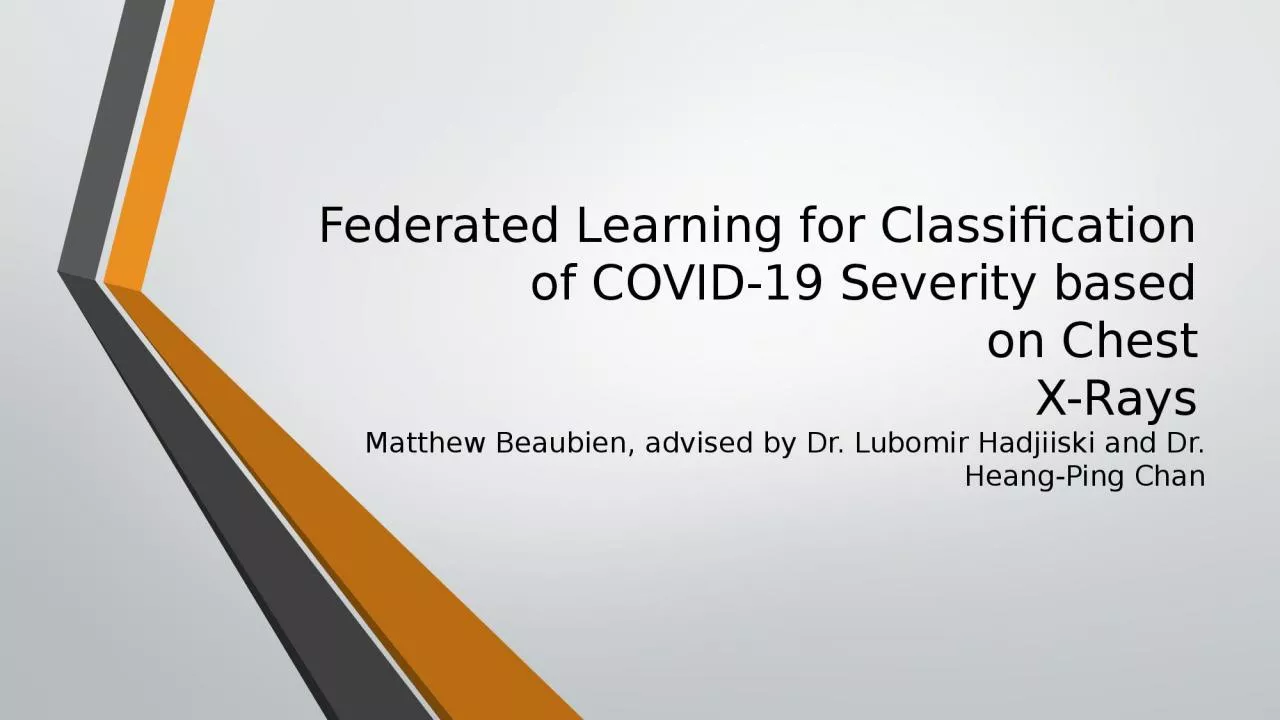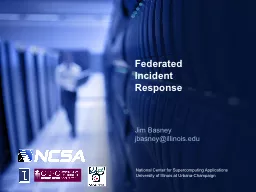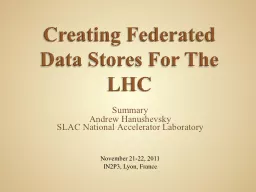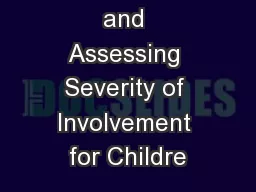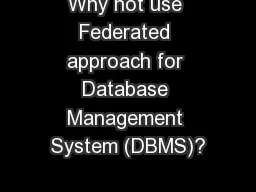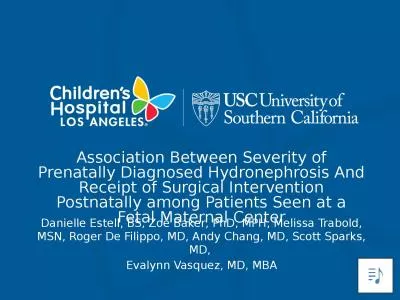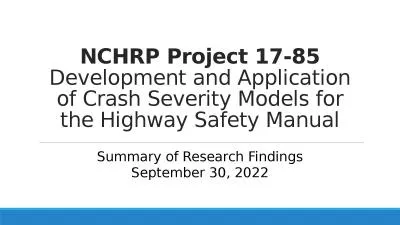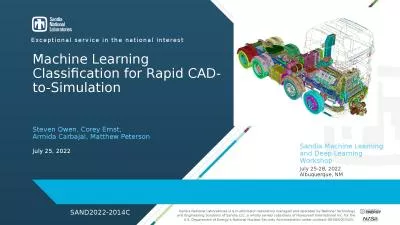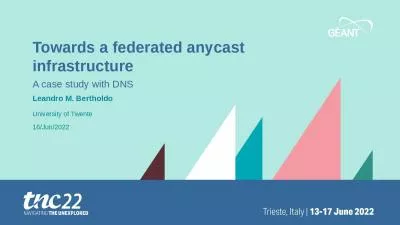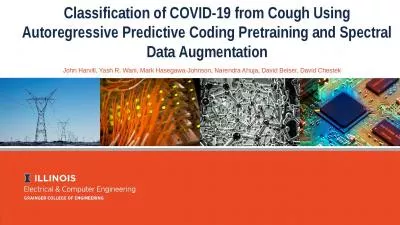PPT-Federated Learning for Classification of COVID-19 Severity based
Author : ella | Published Date : 2024-01-29
on Chest XRays Matthew Beaubien advised by Dr Lubomir Hadjiiski and Dr Heang Ping Chan Motivation How do we train on a lot of data without sharing it
Presentation Embed Code
Download Presentation
Download Presentation The PPT/PDF document "Federated Learning for Classification of..." is the property of its rightful owner. Permission is granted to download and print the materials on this website for personal, non-commercial use only, and to display it on your personal computer provided you do not modify the materials and that you retain all copyright notices contained in the materials. By downloading content from our website, you accept the terms of this agreement.
Federated Learning for Classification of COVID-19 Severity based: Transcript
Download Rules Of Document
"Federated Learning for Classification of COVID-19 Severity based"The content belongs to its owner. You may download and print it for personal use, without modification, and keep all copyright notices. By downloading, you agree to these terms.
Related Documents

